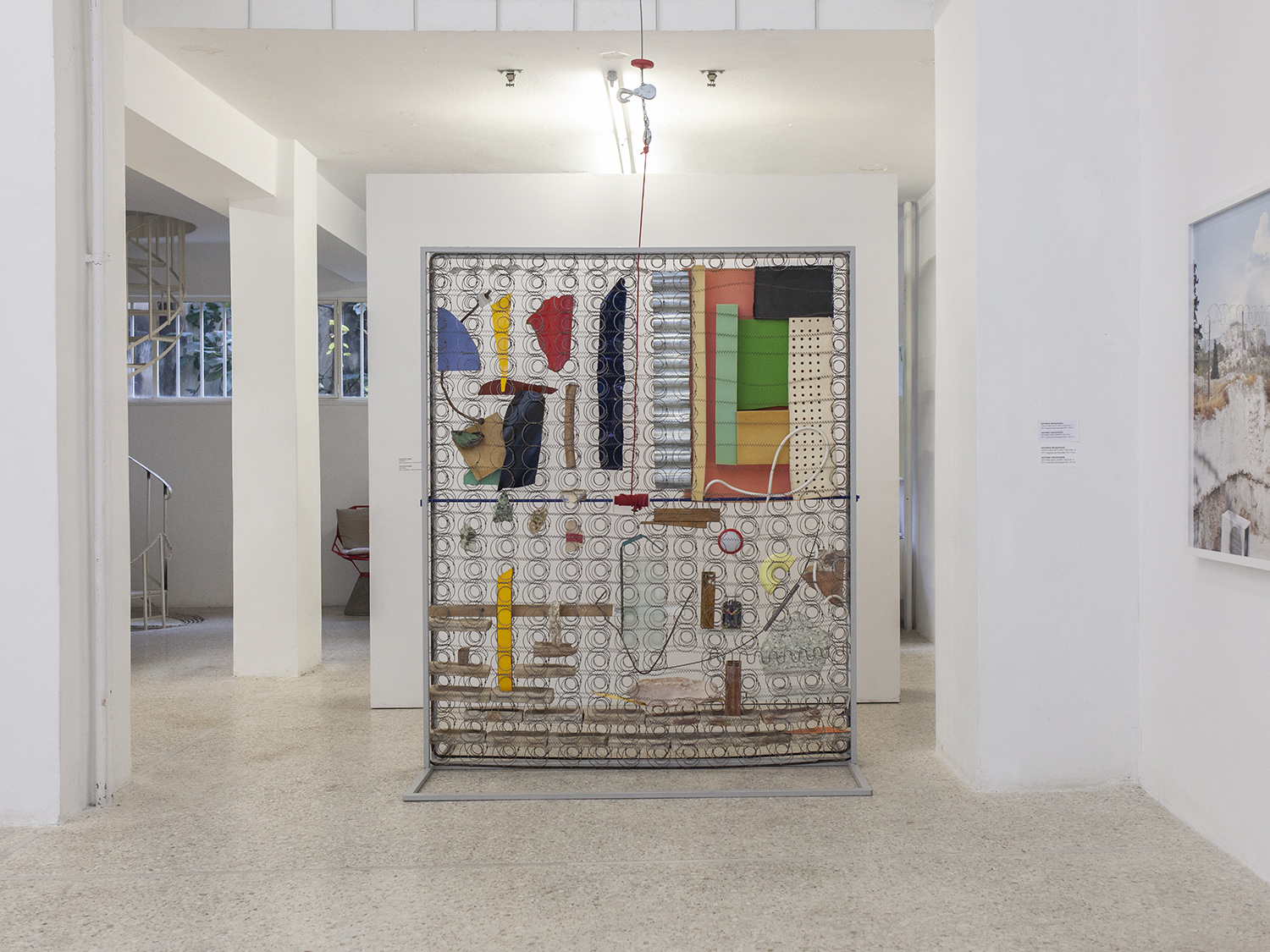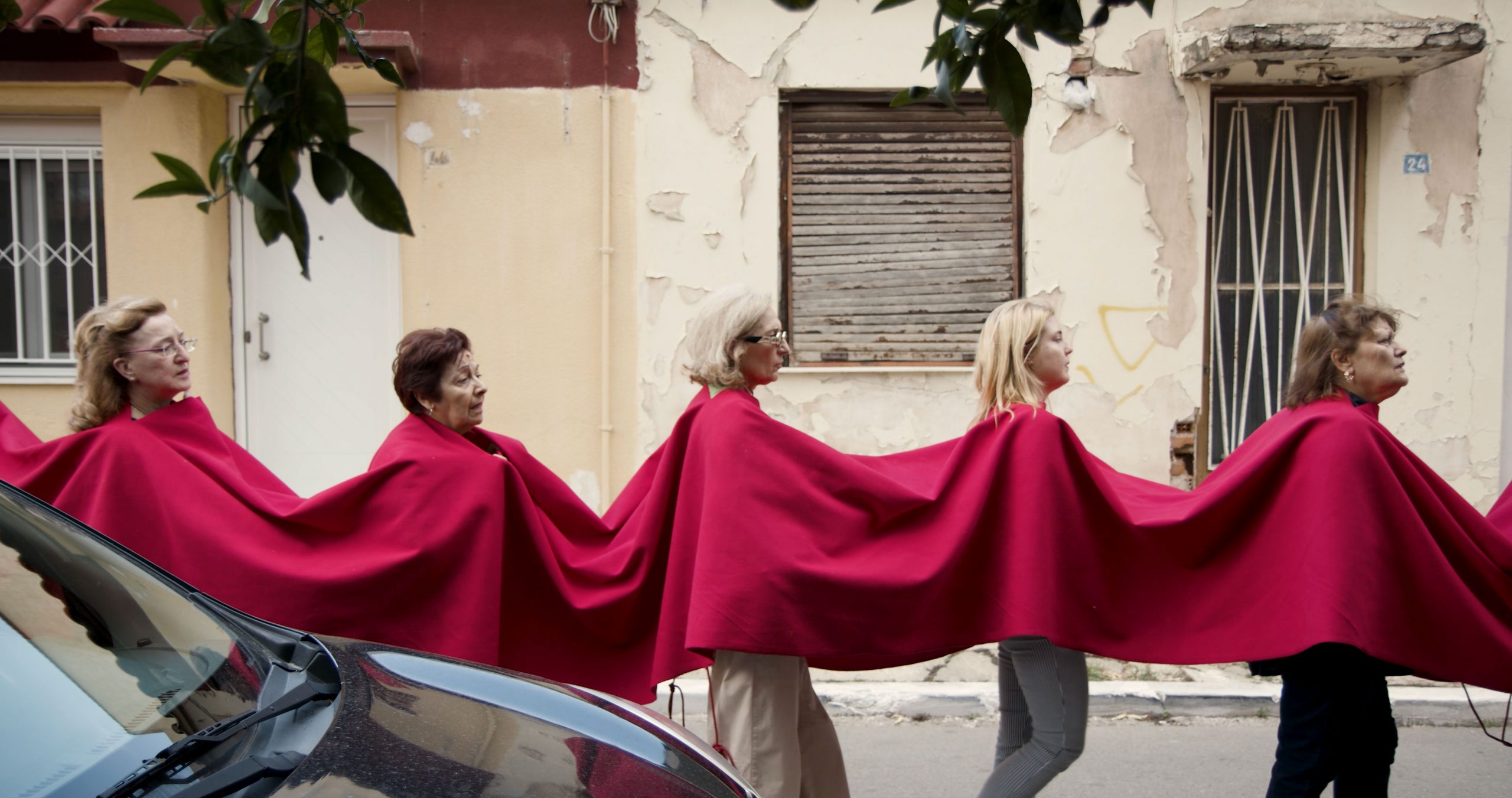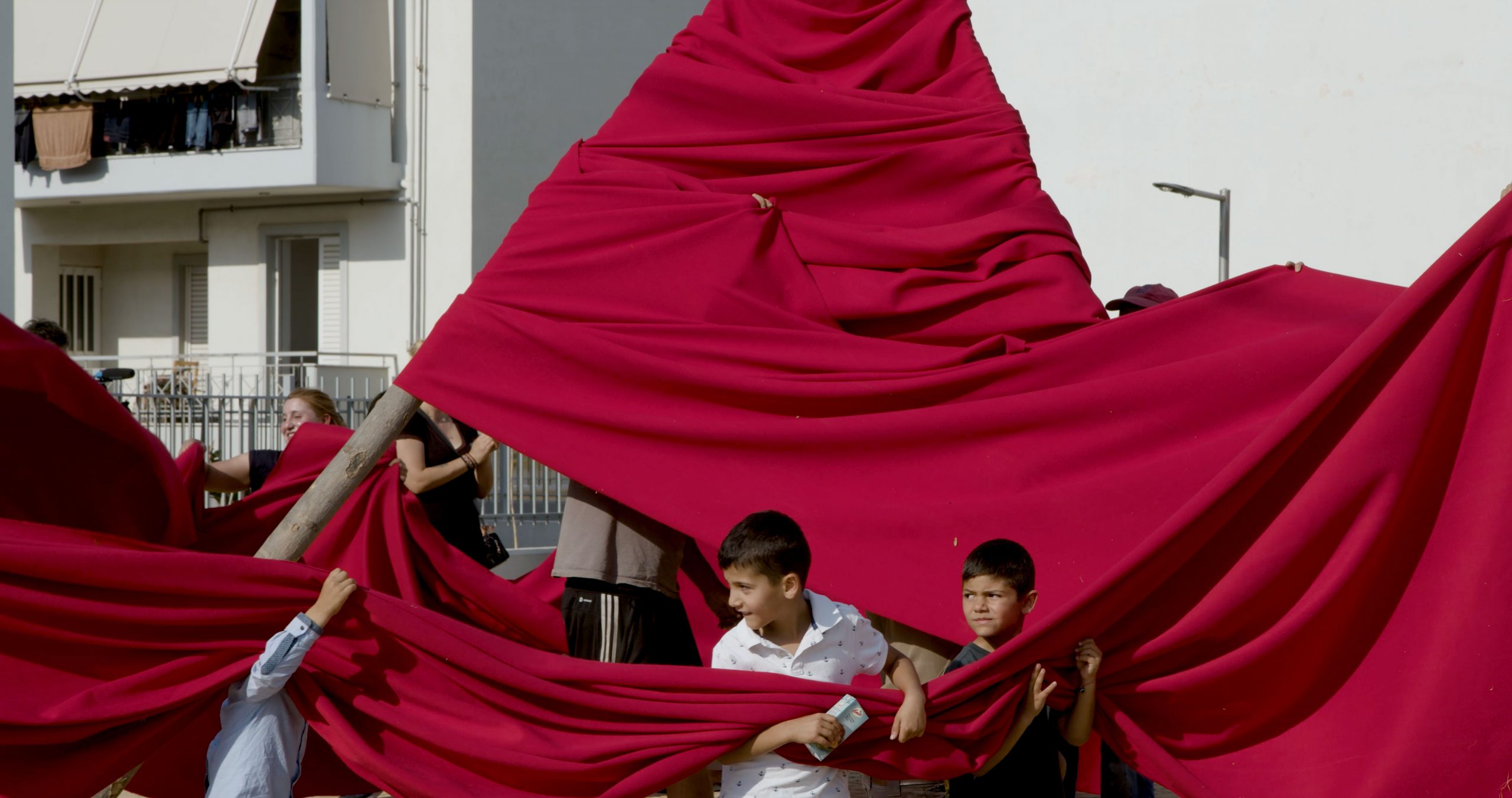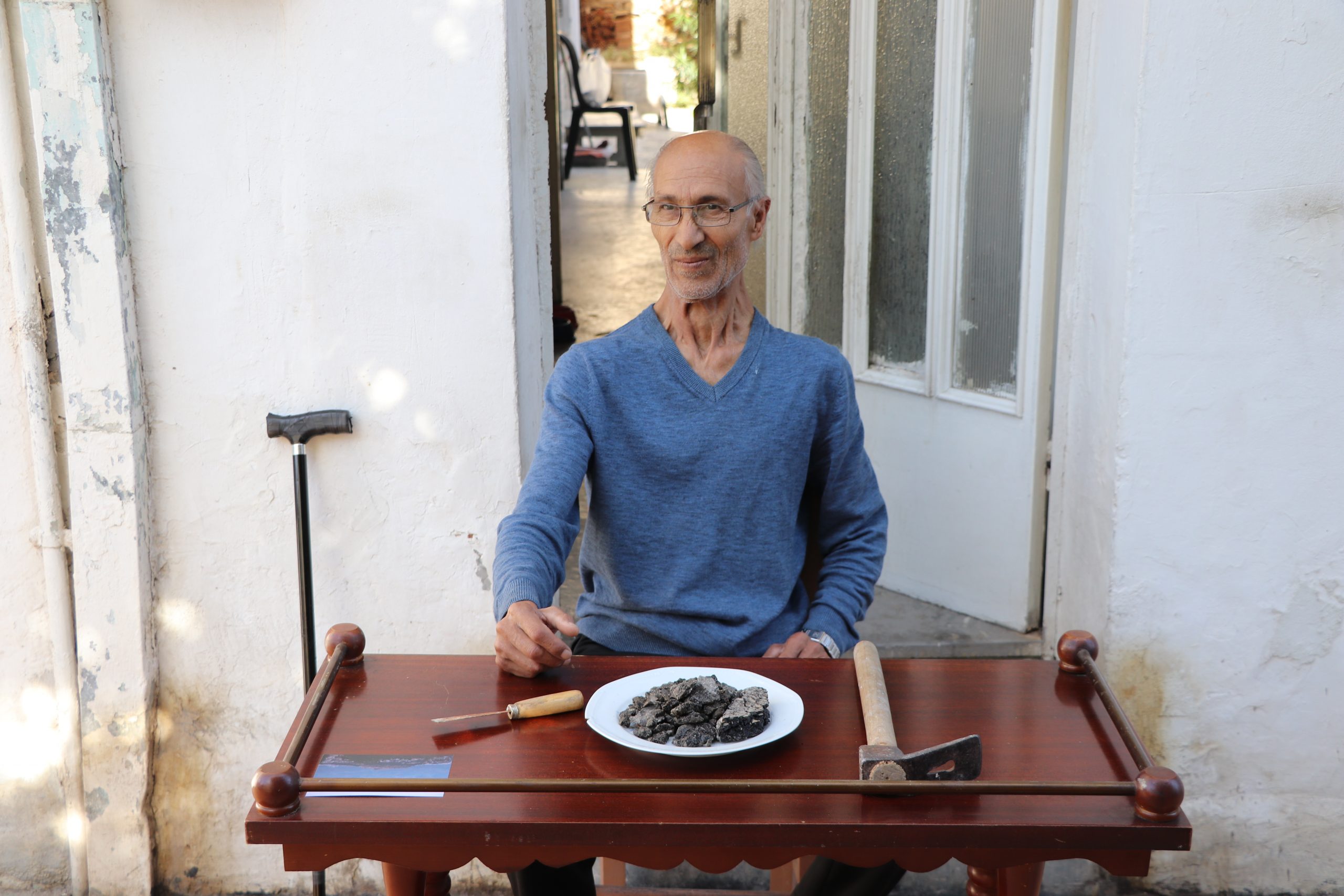21.02.2024
It’s not easy without a compass…
Visual arts
Lately, when I’m walking around Athens and I feel increasingly threatened by memory loss. The cause is not my age, neither my missing brain cells. The flow of time and life itself is not the same in the city I grew up. The fluidity of space is reminiscent to the fluidity of online images and information. I find myself trapped between hotels, luxurious boutiques and shops of similar aesthetic, which have replaced small businesses. I don’t know which way to go. Everything seems so alien and yet so homogeneous. The construction and building sites together with the tables and chairs on the pavements make me feel constantly surrounded and displaced. As the connections and trusting relationships I used to enjoy with Athens, its people and its spots begin to fade, I grow more and more disoriented. I see the city overflowing with pretentiousness, signature drinks and gastronomical experiences, while becoming deprived of its reference points, human input and social capital.
The commercialization and gentrification of the city’s every inch[1] are demolishing all aspects of its past, its joys and its victories, and erasing the diversity and unique character I once knew. Its impetuous neoliberal transition[2] from the old to the new, ignores the residents’ most urgent needs and turns the search for belonging into an extremely vague and stressful process. Athens is now a place where local initiatives about the right to city are becoming a progressively more frequent occurrence in many areas. Under these circumstances, participatory/socially-engaged artistic practices seem to emerge as a deviant activity that can defend our ability to experience public space as a free territory. How can art become the means to express our opinions about the kind of city we wish to inhabit and coexist? In what ways do public artistic expressions reveal, demarcate or challenge neoliberal urbanization? Since the 1980s, the relationship between artists and urban gentrification has been considered controversial, as there have been instances where artists have, whether unwittingly or not, contributed to its advent. However, there are exceptions committed to accomplish the opposite.

The work of the Collectif MASI[1] could be perceived as such. The group was founded in 2018 in Paris by Madlen Anipsitaki and Simon Riedler. The core of its members’ work could be defined or described in many different ways, yet the common denominator is the combination of their knowledge and experience on sociology and architecture. Before moving to Greece, Collectif MASI left its imprint in Paris, Guatemala City, San Jose, Lima, Valparaiso, São Paulo, Rio de Janeiro, Pereira, Bogota and Mexico City, using a variety of mediums. To this date, it has created ephemeral installations in public spaces, assemblages, site-specific interventions, in situ environments, colorful sculptural constructions, scenographies of social intevention, performative and participatory happenings, video works, etc. Depending on the location, its visual language is reconfigured and adapted to the social context, reflecting the local conditions. Occasionally, it even makes use of—and gives second life to— found objects (objet trouvé) by adding materials and vivid colors on them. Each object it chooses is a carrier of past human experiences, interpretations and utilities, and its reuse and imaginative rebirth is determined by new assumptions which derive from the group’s experience in a particular setting. The relationships Collectif MASI fosters with the elements, objects and communities which determine any given space, redefine the strategy of the creative composition it chooses to adopt.

The group’s heterogenous methodologies and approaches are designed to offer alternative, less hierarchical forms of co-existing that can broaden our perspectives on the construction of cities and their communities, as well as diversity, multiculturalism, collective identity and intercultural exchange, and help us recognize the needs of displaced and vulnerable social groups. In the project A square with a view. Renewing the Self-Image of a Square (2021), created for the Station One AIR 2021 artist residency program by Victoria Square Project under the theme Hippodamia in Context, Collectif MASI activated a series of interactions in Victoria square, a part of Athens heavily marked by social and class divisions, that allowed space for improvisation and spontaneity. Taking the neoclassical statue of Johannes Pfuhl as a point of departure, which refers to Hippodamia and adorns the square, the group initially came up with a variation of the myth which proposed a more empowering ending for the character of Hippodamia. Contrary to the events of the original version, in the Collectif MASI’s version Hippodamia succeeds in saving herself. In order to disseminate this narrative locally, the group worked together with the residents of the area. The residents offered their hospitality to eight different sheets/paintings that depict images produced to visualize Hippodamia’s alternative story, by placing them on their balconies. Aside from the sheets/paintings, the group also collaborated with refugee children frequenting the square, and crafted four mobile sculptures out of reusable materials, in which Hippodamia transformed into a bird. Soon after, the sculptures were used as vehicle/toys by the children and developed into a counter-proposal to the static and detached nature of the existing public monument. Furthermore, the project facilitated additional gestures of public connection and inclusivity in Victoria square. For instance, passerby and those who displayed the sheets/paintings on their balconies started a “greeting” game, thereby revealing a common need for communication, expression and social awareness.

Two years later, in the context of the 2023 ELEVSIS European Capital of Culture, Collectif MASI organized the participatory performance entitled Persephone, the red carpet (2023), which was inspired by the titular myth. For 30 consecutive days, the group unraveled a 40-meter-long and 1.5-meter-wide red carpet on the streets of Elefsina, as a symbol of the land’s death and fertility. Prior to the repetitive performance, the group had reached out to different neighborhoods and Roma communities, in order to gain insight into how the lived spaces of Elefsina are socially produced by the subjects that inhabit them, but also in order to invite the latter to participate. Rather than being simply placed on the ground as it is customary on official occasions, the carpet was transformed into a “sculptural” object whose volumes and plasticity were determined by the movement, mood, cooperation as well as the route that the participants—both locals and visitors—followed. The carpet was carried through and rolled out in different parts of Elefsina, in a procession that resembled a spatial occupation and was dissociated from any kind of divisions. The trumpet of Andreas Polyzogopoulos as well as dances and songs performed by members of local associations (Asia Minor Association οf Elefsina – Museum of History and Folklore, Elefsina Association of Peloponnesians, Thriassian Plain Association of Epirotes, Elefsina Chiot Union and Dresden Symphony Orchestra) accompanied the procession. As a result, it was transformed into a healing ritual with unifying and reconciliatory properties, which identified the area as a living organism and acknowledged the importance of social interaction and shared responsibility for the preservation of its vitality. Joshua Olsthoorn and Collectif MASI documented the performance, and it will be soon presented in the form a film under the same title.

Throughout the same year, Collectif MASI worked in the deprived and neglected area of Eleonas, specifically in the Marconi neighborhood, for the exhibition Eleonas ‘23 Chthonic and Anthropocene. After spending a significant amount of time in the neighborhood, the group together with the locals built the performance piece The Acropolis has left our plate (2023). The piece playfully shed light on the needs and pressing issues that affected their everyday life. During the performance, residents of the area set up a table outside the door of their homes. On every table, they had placed a plate of asphalt and tar found on the mountains of rubble, that replaced the Acropolis vistas they used to enjoy before and constitute their current view, as an offering to passersby. A large number of visitors stopped at each table and struck up conversations with the residents, who in turn shared their stories and their requests for substantial state support. Thereupon, all tables were joined into a common one, and residents gathered there in order to smash the rubble with hammers as a sign of protest but also an act of emotional release. This was followed by a dinner they had prepared, to which everyone was invited, and where the discussions continued. The essence of this performance piece is found on one hand, in the formation of the necessary conditions of intimacy and safety so that dialogue could arise naturally, and on the other, on the fact that it offered a glimpse of a democratic deliberation that represented different voices and brought a political issue “to the table” in a more informal manner. Managing to ensure people’s collective involvement, whether in art or in social processes, is admittedly a great challenge. It is worth noting that two weeks later the rubble started to be removed.
Collectif MASI may not count many years of artistic activity in Greece, yet the social and artistic impact the group has achieved is far from negligible. As is evident from the aforementioned works, what characterizes its practice is the utilization of different spaces and modes of sociality, with discretion and respect, and the inventive activation of all those structural elements that can build a truly open, prosperous and unified society. Obviously, in times like ours, such practices cannot replace political action, social struggles or the critique of the existing state institutions. They cannot save a city or ensure the prosperity of its residents. They will not automatically bring about justice and systemic change. Yet, they can shield us from cynicism, awaken us from apathy and mobilize us. They can be turned into a political experience and transform inertia into self-reflection. They can help us discover empathy, recover our tenderness and preserve our memory so as to be able to invoke these qualities on a more regular basis. And lastly, they can remind us where we are headed and for what purpose, like a compass.
Collectif MASI (2018) was founded by the architect Madlen Anipsitaki and the sociologist Simon Riedler. Their project entitled A thread network in the urban fabric (Central and South America, 2018-2019) focused on urban scenography and social art projects, while they have exhibited archival artworks at Espace Voltaire, Cité Internationale des arts (Paris, 2020), Steinzeit Gallery (Berlin, 2022) and as part of the Evia Film Project (2022). They have also experimented with creating connections between private and public spaces in the Residency Ateliers Médicis (Pouillenay, 2020) and in the framework of the Crossing Walls project (Nuit Blanche, Paris, 2021). Their collective performance 1 km as the crow flies (Ecole d’Architecture Paris-Malaquais, 2021) was described by Francis Alÿs as a “magnificent act of resistance to the pandemic”. They have collaborated with the Victoria Square Project for the projects A Square with a View (2021) and Trikiklo (2022); with Greenpeace for Klepsydrogios (SNFCC, 2022); and with 2023 ELEUSIS European Capital of Culture for Persephone, the red carpet. Also is 2023, MASI was selected to present their work at the following exhibitions and fairs: Salon de Montrouge (France), Eleonas 2023 – Chtonic and Anthropocene, Stimoni (Misc.Athens) and The Platforms Project (Athens). Madlen Anipsitaki has been awarded by ARTWORKS and is a Fellow of the SNF Artist Fellowship Program (2020).
Mare Spanoudaki is a researcher, cultural manager and curator who works in broad arenas that relate to social movements, identity politics, folk and popular culture, institutional critique, communality, intimacy, archives and exhibition histories. Her education includes a BA in Communication, Media and Culture from Panteion University of Social and Political Sciences; an MA in Cultural Policy and Management from City (University of London) and an MRes in Exhibition Studies from Central Saint Martins (University of the Arts London). She has worked for various cultural and art institutions in Europe, is actively involved with the production, communication and organization of cultural events, and has curated community projects, art publications and contemporary art exhibitions in Greece, the UK, and Germany. She is a fellow of the Start – Create Cultural Change program (2017–2018) for her work as a cultural manager and has been awarded a Stavros Niarchos Foundation (SNF) Artist Fellowship by ARTWORKS for her curatorial practice. In 2023, she was selected to participate in the UNIDEE residency program ‘Neither on Land nor at Sea’ (Module IV) in Italy. She has contributed texts and essays to exhibition catalogues, contemporary art journals and art books. Since 2017, she is one half of the two-person female artistic/curatorial synergy This is not a feminist project, whose work has been exhibited at the Thessaloniki Concert Hall (Thessaloniki); 2023 ELEUSIS European Capital of Culture; A-DASH space; and at the National Museum of Contemporary Art (EMST) in Athens. She is also a founding member of the Union of Workers in Contemporary Art, an amateur photographer and DJ, and an archival material and vinyl collector.
[1] Prime examples of this situation are the Great Promenade project, Omonoia square, the parks Pedion tou Areos and Akadimia Platonos, the transfer of several ministries from their central Athens locations to a “government park” in the PYRKAL buildings, Strefi Hill (which seems to be salvaged after all thanks to the interventions of the locals), Exarcheia square, the neighborhood of Metaxourgeio, the closure of the iconic IDEAL cinema, etc.
[2] Including factors such as the privatization and redevelopment of entire areas, housing insecurity, the rise of short-term stays, the explosion of rents, the reduction of green areas in parks and squares as well as the failure to comply with legislative provisions. Public consultations are overridden and calls to tenders for architects are restricted and/or not issued at all for the benefit of tourist growth. When urban planning becomes subject of private donations, then automatically the right to shape the city is granted to the discretion of benefactors who are not residents of the respective area, architects, or even experts on the subject.
[3] The name Masi in French is pronounced “mazi”, which in Greek means together.



